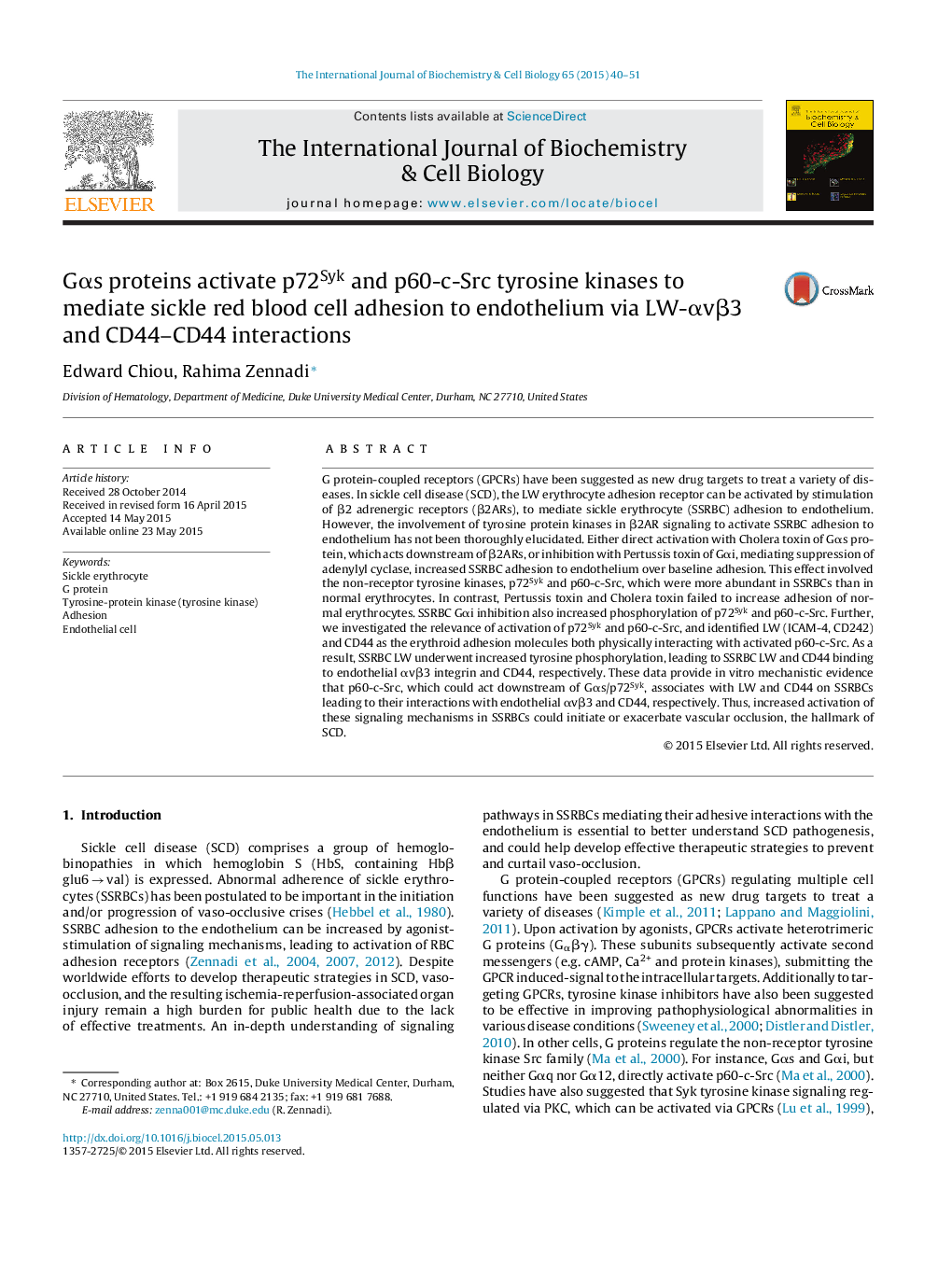| Article ID | Journal | Published Year | Pages | File Type |
|---|---|---|---|---|
| 1983472 | The International Journal of Biochemistry & Cell Biology | 2015 | 12 Pages |
G protein-coupled receptors (GPCRs) have been suggested as new drug targets to treat a variety of diseases. In sickle cell disease (SCD), the LW erythrocyte adhesion receptor can be activated by stimulation of β2 adrenergic receptors (β2ARs), to mediate sickle erythrocyte (SSRBC) adhesion to endothelium. However, the involvement of tyrosine protein kinases in β2AR signaling to activate SSRBC adhesion to endothelium has not been thoroughly elucidated. Either direct activation with Cholera toxin of Gαs protein, which acts downstream of β2ARs, or inhibition with Pertussis toxin of Gαi, mediating suppression of adenylyl cyclase, increased SSRBC adhesion to endothelium over baseline adhesion. This effect involved the non-receptor tyrosine kinases, p72Syk and p60-c-Src, which were more abundant in SSRBCs than in normal erythrocytes. In contrast, Pertussis toxin and Cholera toxin failed to increase adhesion of normal erythrocytes. SSRBC Gαi inhibition also increased phosphorylation of p72Syk and p60-c-Src. Further, we investigated the relevance of activation of p72Syk and p60-c-Src, and identified LW (ICAM-4, CD242) and CD44 as the erythroid adhesion molecules both physically interacting with activated p60-c-Src. As a result, SSRBC LW underwent increased tyrosine phosphorylation, leading to SSRBC LW and CD44 binding to endothelial αvβ3 integrin and CD44, respectively. These data provide in vitro mechanistic evidence that p60-c-Src, which could act downstream of Gαs/p72Syk, associates with LW and CD44 on SSRBCs leading to their interactions with endothelial αvβ3 and CD44, respectively. Thus, increased activation of these signaling mechanisms in SSRBCs could initiate or exacerbate vascular occlusion, the hallmark of SCD.
